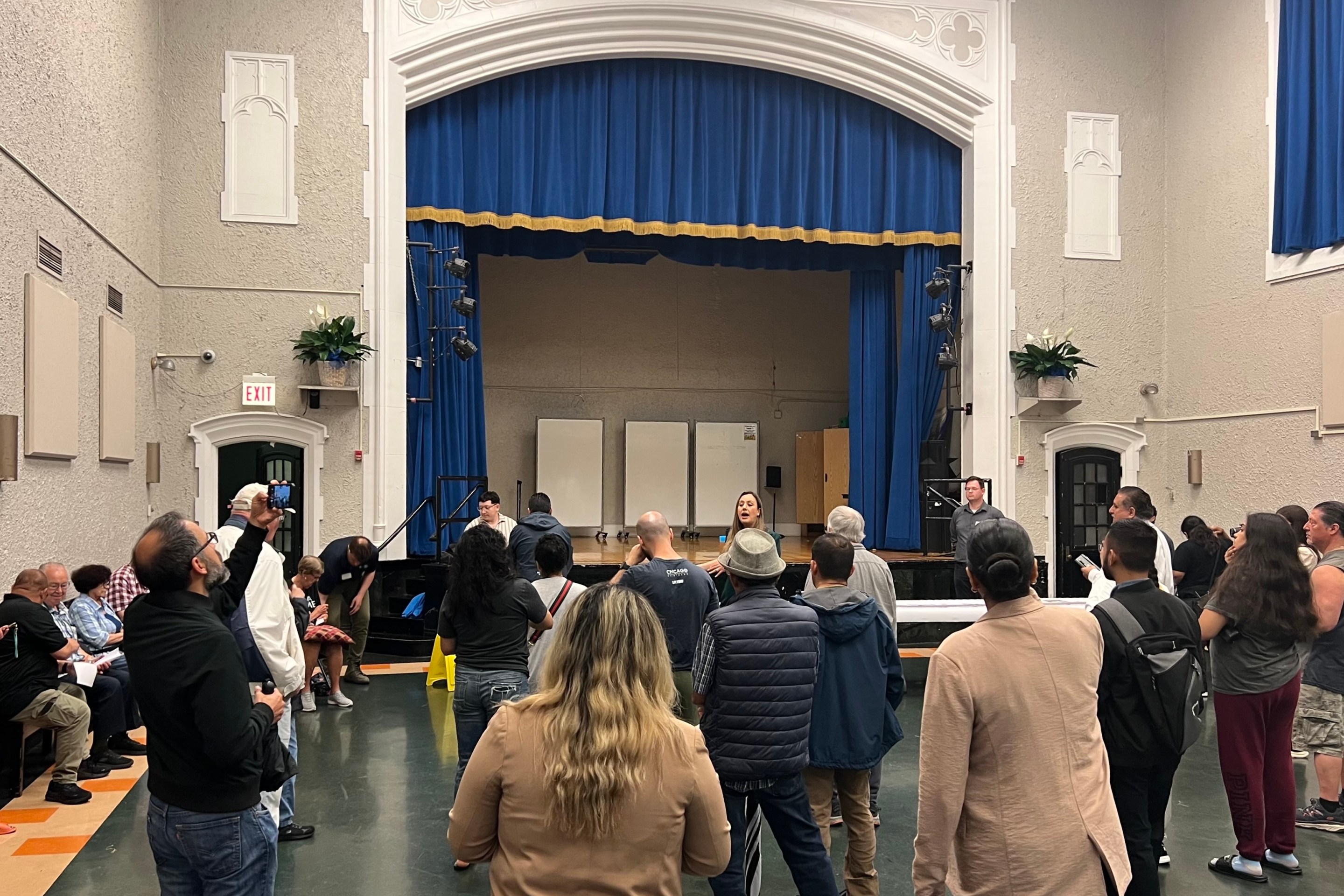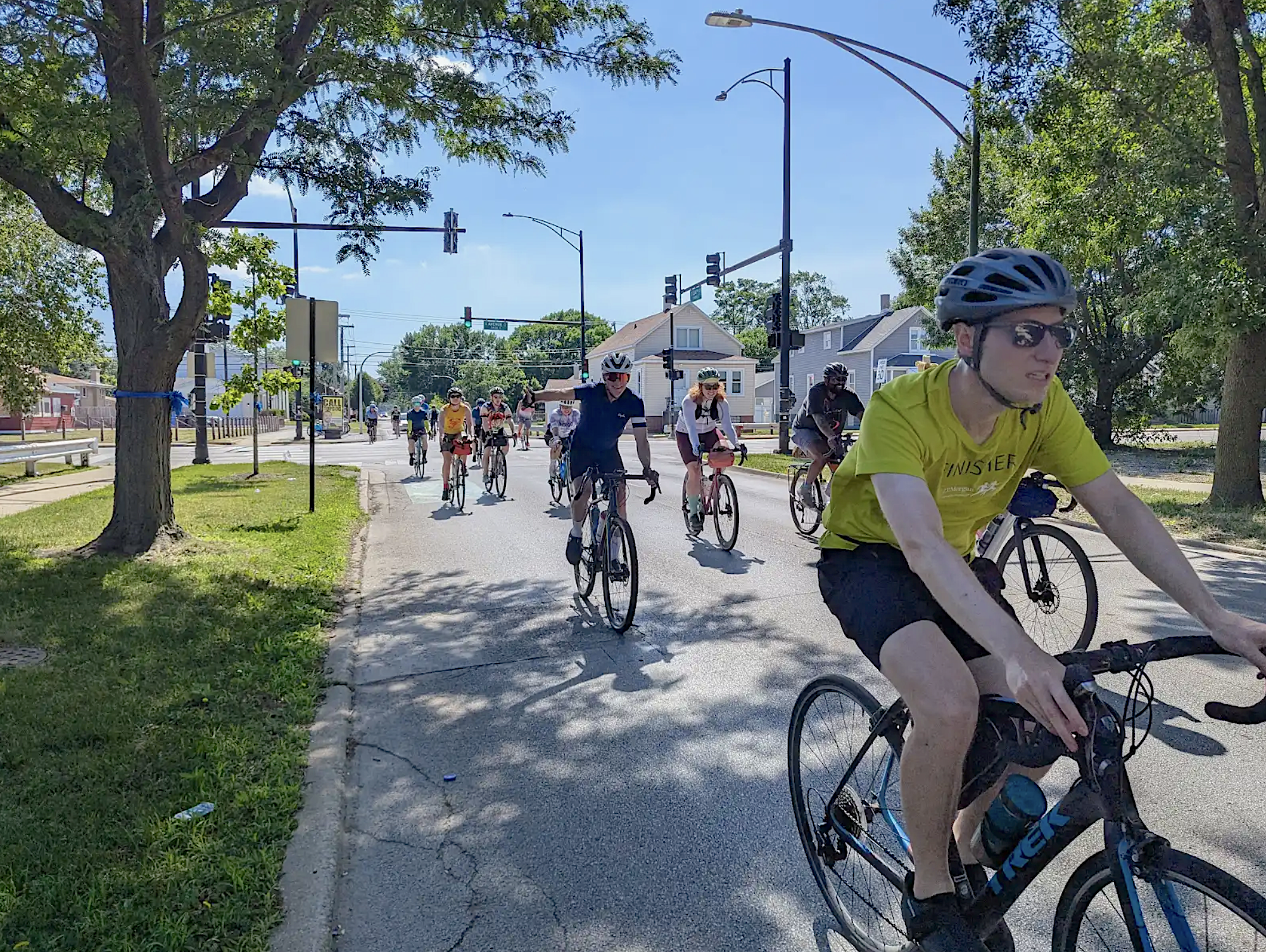Time and time again we see how officials tasked with funding, designing, building, and maintaining our transportation systems fail vulnerable road users. Unfortunately, the Chicago Department of Transportation's plan to resurface Belmont Avenue between Ashland and the Lakefront without building protected bike lanes on the entire stretch is more of the same.
This time, however, safe streets advocates organized to demand that CDOT officials; local alders Scott Waguespack (32nd) and Tom Tunney (44th); and Mayor Lori Lightfoot do more to protect and prioritize people walking, biking, and riding transit.
On Wednesday, September 7, nearly 180 protesters came together on bikes of all kinds – cargo bikes, Divvies, children’s bikes, road bikes, e-bikes, and electric unicycles – at Fellger Park, 2000 W. Belmont Ave., to rally and demand that CDOT improve the designs for the resurfacing project. The demonstration was organized by Chicago, Bike Grid Now in partnership with Urban Environmentalists Illinois, Better Streets Chicago, Chicago Family Biking, and community advocate Jeremy Frisch.
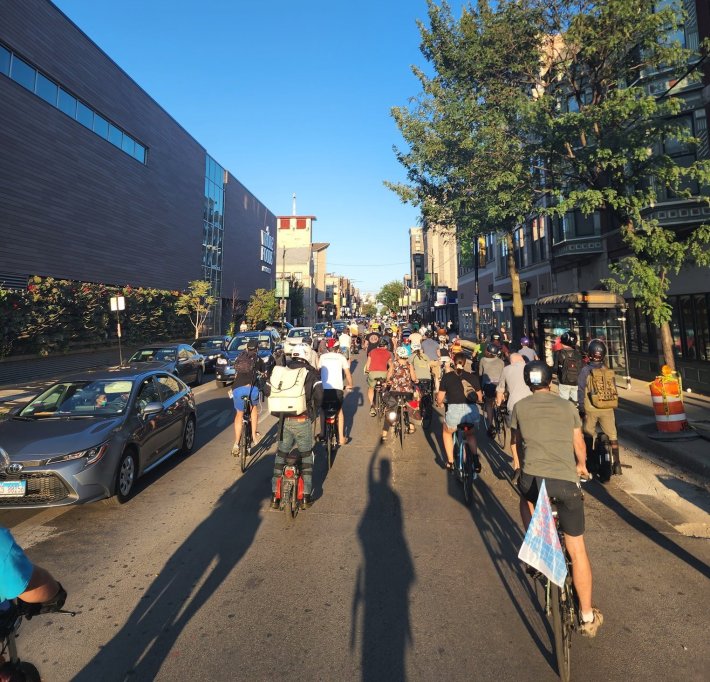
Speakers at the protest made it clear that the plans for painted bike lanes that only have physical protection at some intersections, ending abruptly at Clark Street is an inadequate design that needs to be improved with at least three major changes.
1) Add physical protection along the entire length of the bike lanes.
2) Extend the bike lanes all the way to the Lakefront Trail.
3) Improve bus infrastructure with boarding islands, shelters, and transit signal priority.
After the rally at the park, the group rode together for in “Bike Jam,” an act of civil disobedience in which a group of cyclists take over all travel lanes in one direction and rides slowly together. The group pedaled east on the entire length of the Belmont resurfacing project area, talking with and handing out flyers to pedestrians and drivers along the way. Protesters stopped in front of Tunney’s office, where their demands were reiterated. Many bystanders cheered on the group throughout the Bike Jam.
"When I learned that Belmont was being resurfaced with only partial painted bike gutters, I got mad!"
Watch as @ITSoFRISCHial, @itskylelucas & @ChiFamilyBiking call for a better https://t.co/n91vHJfnG6. Ride along on @bikegridnow's Bike Jam as Belmont briefly becomes safe/fun! pic.twitter.com/KrRnUcvx5h
— Jeremy Frisch (@ITSoFRISCHial) September 13, 2022
While the energy of the protest was powerful and pointed, it was hard not to feel elated when watching all the kids roll out on their own bikes or in the cargo bins of their parents' cycles. This is the kind of happiness Chicagoans deserve to experience every single day. The kind of joy that is stolen by infrastructure that fails to protect the most vulnerable, and by leaders who lack the vision and courage to stand up to car dominance in our city.
Prior to the Bike Jam, through a campaign launched by Jeremy Frisch, over 2,000 letters were sent to the mayor, CDOT commissioner, Gia Biagi, and Waguespack and Tunney, demanding better improvements along Belmont. After the Jam, participants were directed to Chicago, Bike Grid Now’s website where people can find information on how to contact alders and CDOT by phone.
The response from public officials on the Belmont issue has ranged from indifference to being outright patronizing to the people they serve. CDOT maintains that they are putting in protected bike lanes wherever possible but much of Belmont is too narrow for bike lanes or additional protection. Advocates disagree, providing street layout examples illustrating how additional infrastructure is possible.
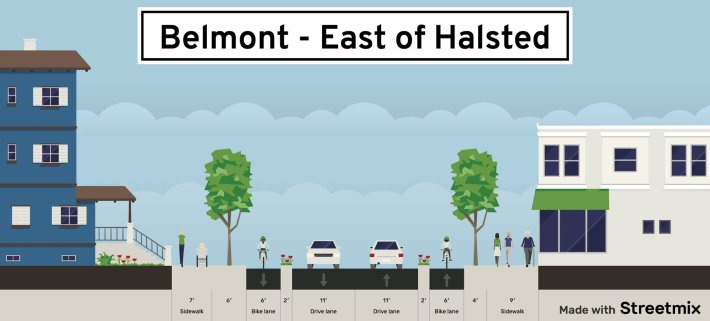
Tunney’s staffers claim they have limited ability to ask CDOT to put in more safety infrastructure during this project. However, 44th Ward residents say the alder has blocked other bike improvements proposed the ward, such as bike lanes on Broadway and additional bike racks in front of Nettelhorst Elementary School.
One of Waguespack’s staffers told a constituents that 10 years ago installing bike lanes on Belmont would have been unthinkable, but at least bike riders are now receiving something. The resident was also told that the the desires of drivers to not experience more traffic congestion or scarcer on-street parking also have to be considered. This attitude is tone-deaf and dangerous, especially high numbers number of cyclists and pedestrians killed by drivers in Chicago this year.
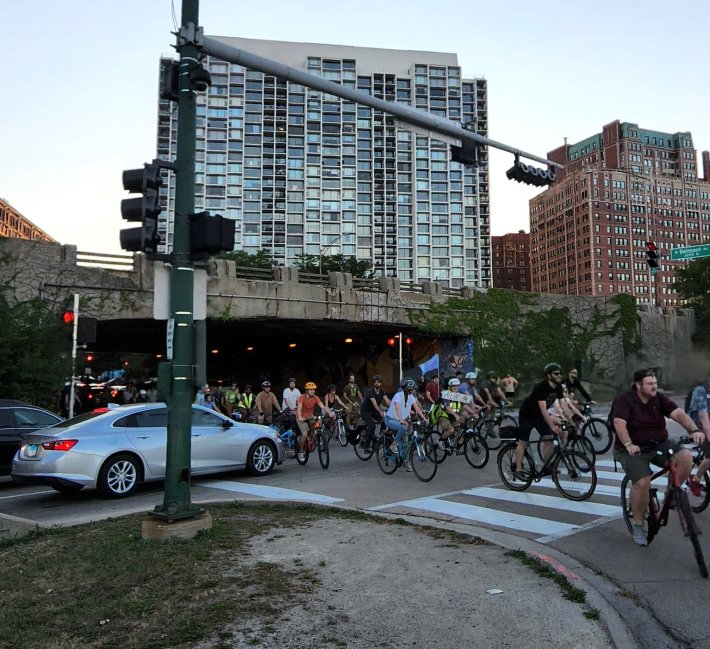
With the start date for construction on Belmont approaching, activists are continuing to petition CDOT and the alders to improve the project design, stressing that this is a matter of life and death. Community members can learn more at BelmontAve.org.

